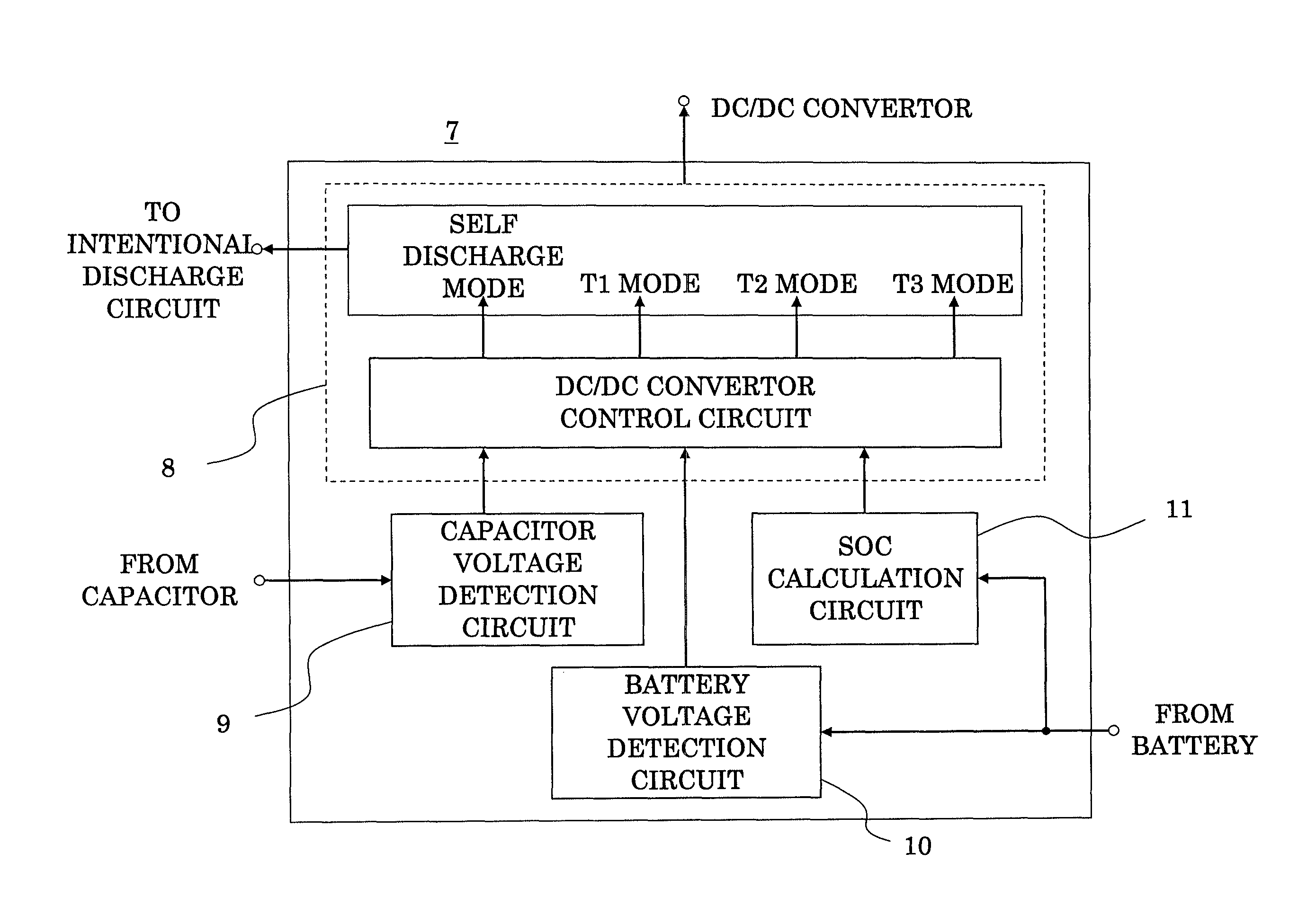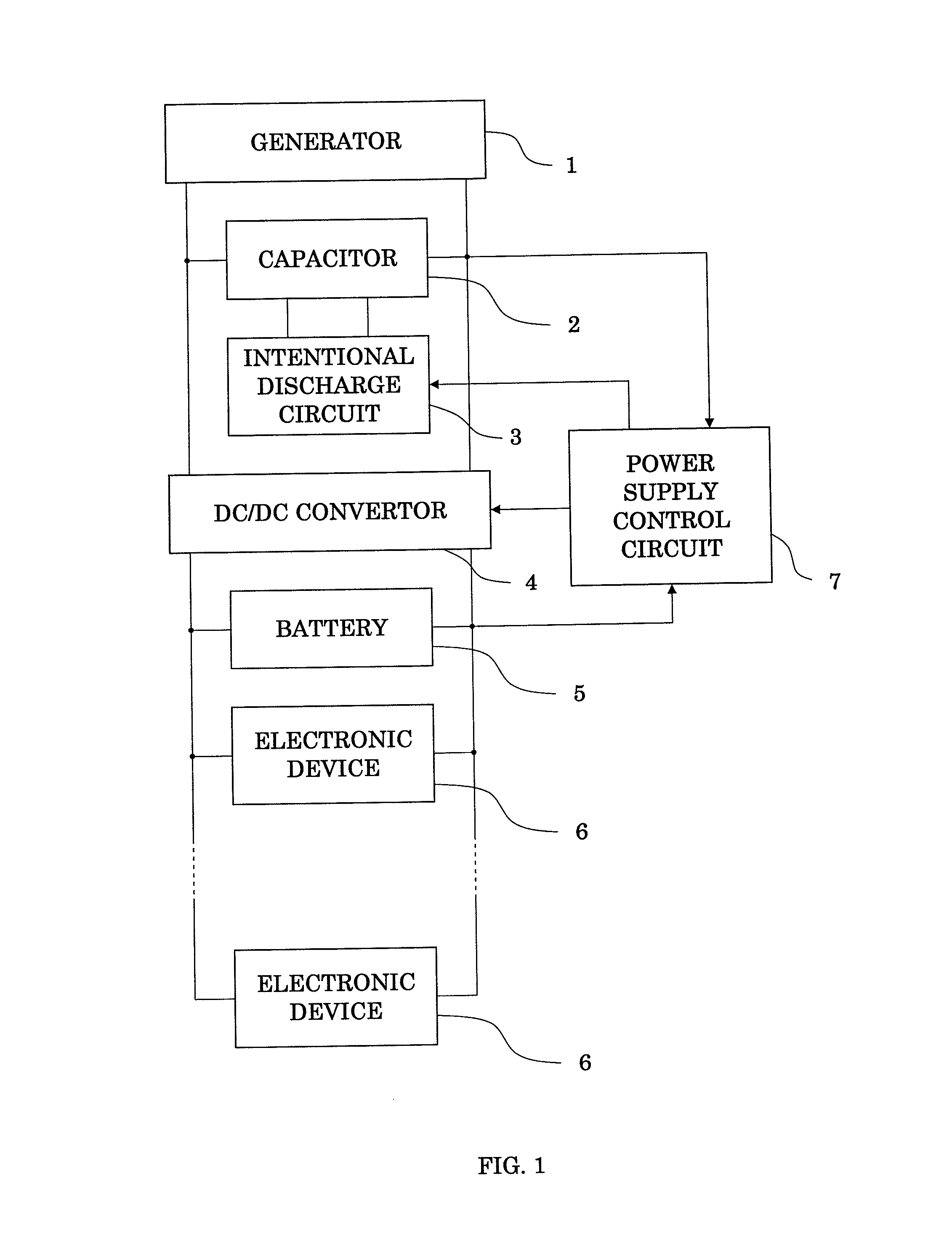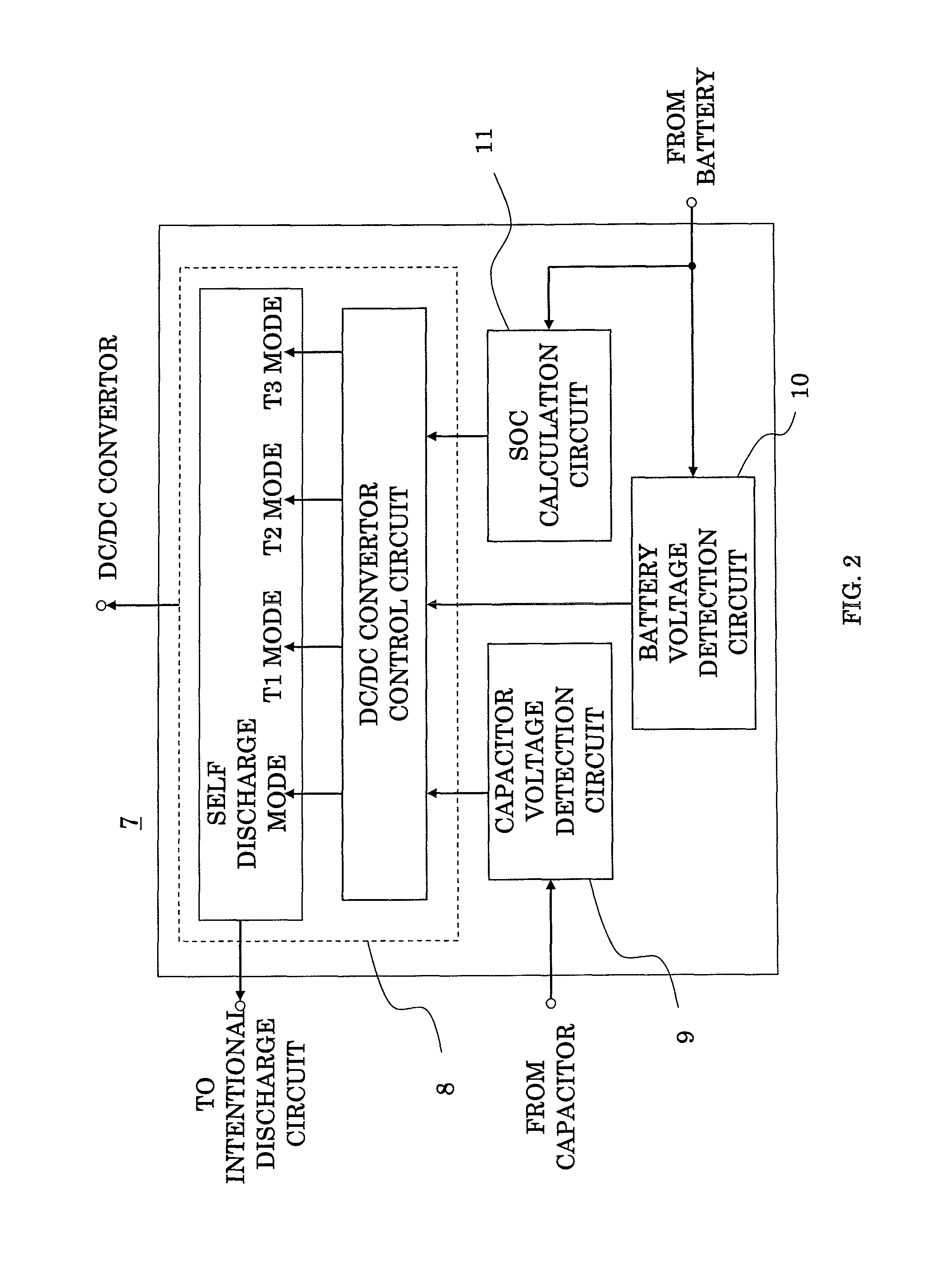Power supply device for vehicle
a power supply device and vehicle technology, applied in electric devices, propulsion by capacitors, batteries/cells, etc., can solve the problems of large loss, low efficiency as a power supply device and a vehicle on the whole, etc., to achieve high efficiency, avoid waste of power supply, and prolong the service life of capacitors
- Summary
- Abstract
- Description
- Claims
- Application Information
AI Technical Summary
Benefits of technology
Problems solved by technology
Method used
Image
Examples
embodiment 1
[0020]A power supply device for vehicle according to a first preferred embodiment of the present invention is hereinafter described referring to the drawings.
[0021]FIG. 1 is a block diagram illustrating an entire arrangement of the power supply device for vehicle, and FIG. 2 is a block diagram illustrating an internal arrangement of the power supply control circuit thereof.
[0022]A power supply device for vehicle in FIG. 1 includes: a generator 1; a capacitor 2 connected to both terminals of the generator 1; a forced discharge circuit 3 forcing an electric power having been stored in the capacitor 2 to discharge; a DC / DC convertor 4 connected in parallel with the capacitor 2; a battery 5 connected in parallel with the DC / DC convertor 4; a load 6 formed of various electronic devices connected to the battery 5; and a power supply control circuit 7 acting to monitor the voltage of the capacitor 2 and the battery 5 and to control the operation of the DC / DC convertor 4 and the forced disc...
embodiment 2
[0037]In the foregoing first embodiment, the predetermined period after the vehicle engine has been stopped is assumed to be T1; whereas by monitoring whether or not the voltage of the capacitor 2 is varied, that is, whether or not the charge operation or discharge operation of the capacitor 2 is conducted at the power supply control circuit 7, a state of no charge-discharge operation can be determined to be the stop of operation. By letting a predetermined period after the above-mentioned determination T1, the vehicle engine needs not to be externally stopped, that is, the OFF signal of the ignition switch of the vehicle needs not to be inputted, thus enabling to reduce the number of external input terminals of the power supply control circuit 7.
embodiment 3
[0038]Furthermore, in this third embodiment, by the provision of a temperature sensor, temperature rise of a cooling water of the vehicle is determined to be the operation start of the engine, and the drop of water temperature to a predetermined temperature is determined to be the lapse of a predetermined time period from the operation stop of the engine. In the first and second embodiments, a microcomputer forms the power supply control circuit 7 illustrated in FIG. 2 and the time lapse is counted using this microcomputer; whereas in this third embodiment, the time lapse is not counted using a microcomputer, but it is set such that the time point at which a water temperature drops to a predetermined temperature is regarded as when a predetermined time period has passed from the stop of operation, and the discharge to a battery is conducted. Accordingly, the function of monitoring the charge or discharge time period of the capacitor 2 can be simplified, thus enabling to obtain a mor...
PUM
 Login to View More
Login to View More Abstract
Description
Claims
Application Information
 Login to View More
Login to View More - R&D
- Intellectual Property
- Life Sciences
- Materials
- Tech Scout
- Unparalleled Data Quality
- Higher Quality Content
- 60% Fewer Hallucinations
Browse by: Latest US Patents, China's latest patents, Technical Efficacy Thesaurus, Application Domain, Technology Topic, Popular Technical Reports.
© 2025 PatSnap. All rights reserved.Legal|Privacy policy|Modern Slavery Act Transparency Statement|Sitemap|About US| Contact US: help@patsnap.com



